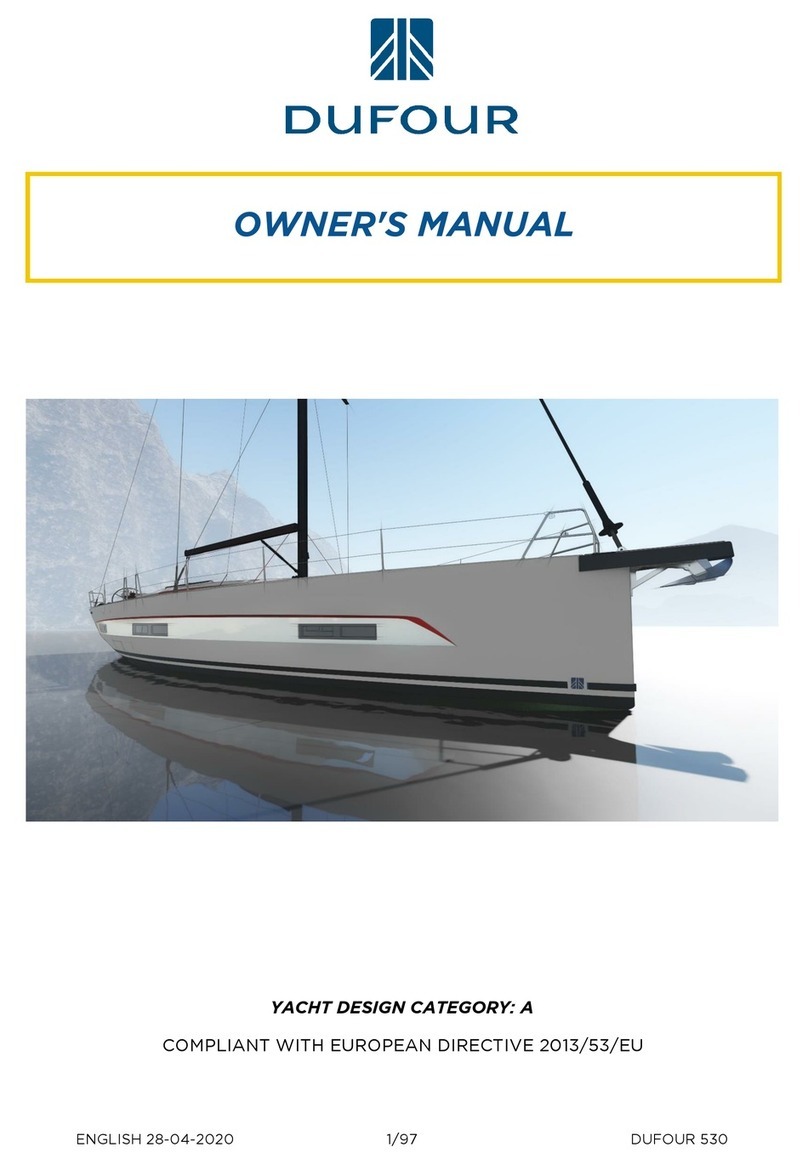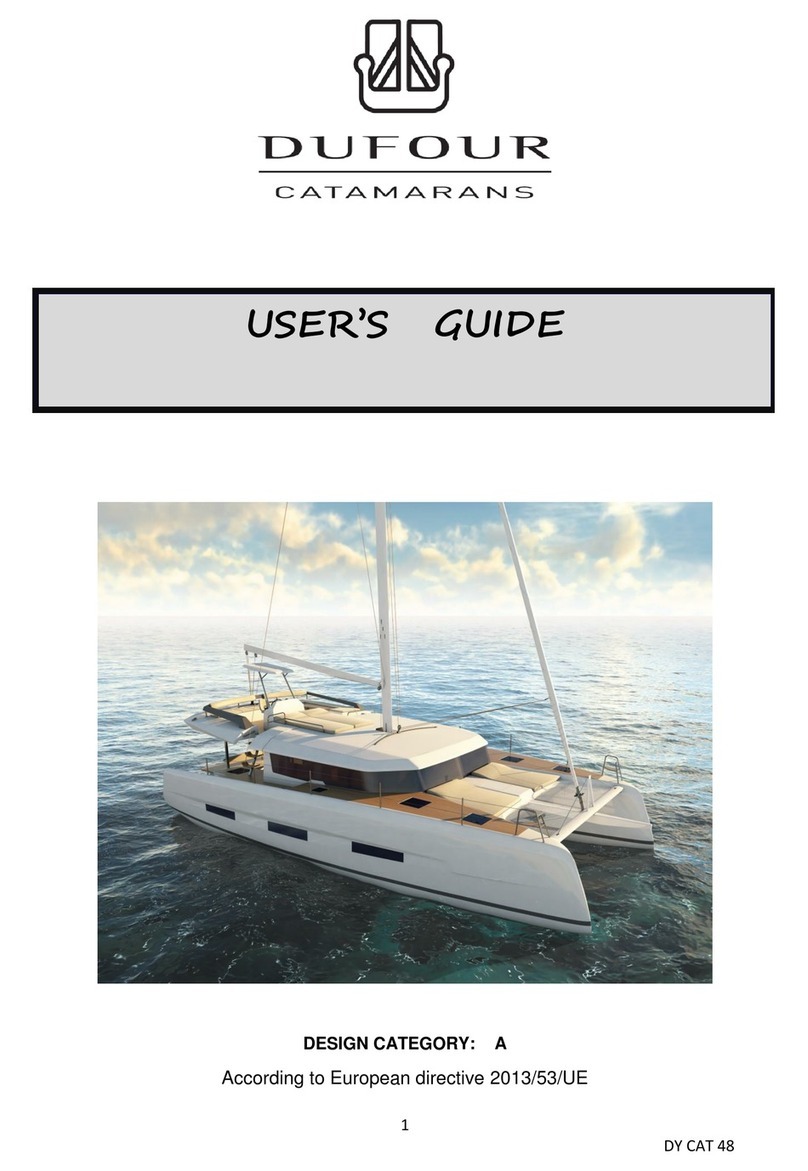ENGLISH 11-01-2012 5/72 DUFOUR 335 Grand Large
CONTENTS
INTRODUCTION ........................................................................................................................................................7
I. GENERAL INFORMATION............................................................................................................................8
Design category____________________________________________________________________________8
Certification ______________________________________________________________________________8
Identification______________________________________________________________________________8
Builder's plate_____________________________________________________________________________9
Degrees of danger__________________________________________________________________________9
II. PRINCIPAL SPECIFICATIONS...................................................................................................................10
III. ELECTRICAL SYSTEMS...................................................................................................................................11
Safety and operating instructions for the electrical system _______________________________________11
Installing new equipment___________________________________________________________________ 11
Batteries_________________________________________________________________________________ 12
Electric windlass__________________________________________________________________________12
220 Volts /110 Volts installation (ISO 13297: 2000) _____________________________________________13
IV. GAS INSTALLATION.........................................................................................................................................14
Operating advice__________________________________________________________________________14
Checking the gas circuit (ISO 10239: 2000)____________________________________________________15
Changing the gas cylinder __________________________________________________________________15
V. DRAIN & SANITATION SYSTEM......................................................................................................................16
Characteristic of the exhaust system (ISO 15083: 2003)__________________________________________ 16
Pressurized fresh-water pump ______________________________________________________________16
Seacocks_________________________________________________________________________________17
Operation of sea toilets_____________________________________________________________________17
Operation of the holding tank (ISO 8099: 2000) ________________________________________________17
VI. FLOODING .........................................................................................................................................................18
VII. FIRE PROTECTION.........................................................................................................................................18
Installation ______________________________________________________________________________18
Safety instructions ________________________________________________________________________19
VIII. ENGINE............................................................................................................................................................20
General precautions_______________________________________________________________________20
Exhaust gas emission ______________________________________________________________________20
Safety 20
Wintering _______________________________________________________________________________21
IX. FUEL INSTALLATION......................................................................................................................................21
X. STEERING SYSTEM............................................................................................................................................21
Helm 21
Emergency tiller __________________________________________________________________________22
XI. SAILING ..............................................................................................................................................................22
XII. PROTECTION AGAINST LIGHTNING..........................................................................................................23
Maintenance _____________________________________________________________________________ 23
Protection of persons during a storm _________________________________________________________23
XIII. ENVIRONMENTAL PROTECTION & SAFETY ..........................................................................................23
XIV. SAFETY FACILITIES......................................................................................................................................24
XV. HANDLING, TRANSPORTING, HAULOUT...................................................................................................24
XVI. GUARANTEE, TRANSFER OF OWNERSHIP..............................................................................................27
1. Presentation plan.............................................................................................................................................32
2. Accommodation layout....................................................................................................................................33
3. Deck fittings plan.............................................................................................................................................34
4. Sail plan ...........................................................................................................................................................36
5. Halyard and sheet operating diagram.............................................................................................................38
6. 220 V circuit diagram......................................................................................................................................40
































